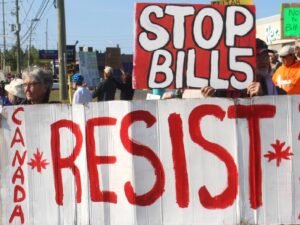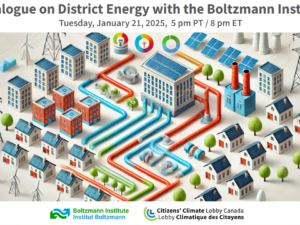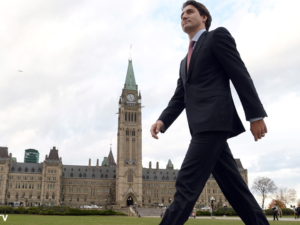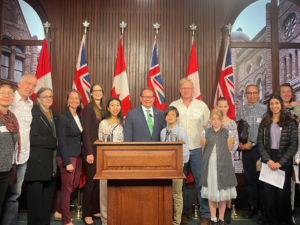Updated and Corrected February 21, 2016 Ottawa plans to set a national price on carbon, one that integrates with other provincial mechanisms. They are proposing a minimum carbon price now of $15 per tonne with promises to raise it. These are all just promises and plans though. Legislation has not been introduced yet let alone passed through Parliament. Citizens’ Climate Lobby (CCL) and other organizations will be supporting the federal government for nationally integrated carbon pricing that increases annually. Earlier this month, Canada’s Ecofiscal Commission reported that Canada’s emissions currently are on track to be 56% above the 2030 target submitted to the UN prior to the Paris climate conference. It’s clear that a pan-Canadian price would have to come into effect soon, and rise quickly to close the gap. Also, in related news, late last week, the Energy Ministers for Canada, the U.S. and Mexico signed a Memorandum of Understanding on Climate Change and Energy Collaboration. Action is needed now because the climate crisis is an urgent situation. Last week, inNature Climate Change, scientists warned that the window for reducing greenhouse gas emissions is closing rapidly and we risk irreversibly changing the geography of our planet. “Our greenhouse gas emissions today produce climate-change commitments for many centuries to millennia,” said Thomas Stocker, a climate modeler and co-author on the Nature Climate Change article. “It is high time that this essential irreversibility is placed into the focus of policy-makers.” “Taking the first steps is important, but it is essential to see these as the start of a path toward total decarbonization,” Daniel Schrag, another co-author and director of Harvard’s Center for the Environment, pointed out. “This means continuing to invest in innovation that can someday replace fossil fuels altogether. Partial reductions are not going to do the job.” Prime Minister Justin Trudeau announced on February 10, 2016 that he and the premiers will meet with First Nations, Inuit, and Metis leaders on March 2, 2016. The Prime Minister will then host a First Ministers’ Meeting with Premiers on March 3, 2016. Both meetings will take place in Vancouver, British Columbia, and climate change will be the central topic. PM Trudeau will also deliver the keynote speech at the Globe Summit, which focuses on sustainable business leadership, March 2-4, 2016. Last week PM Trudeau said, “The future belongs to countries and businesses that become leaders of clean technologies, innovation, and sustainability. Canada is building the partnerships and making the investments necessary to take advantage of the growing opportunities in these markets.” Embracing clean technology would put Canada on the right track to carve out a slice of this multi-trillion-dollar global industry. Studies from Mark Jacobson at Stanford University show that the world, including Canada, can convert to 100 percent renewable energy – from wind, water and solar resources — by 2050 without the use of nuclear power. This includes energy for transport, heating fuel and electricity. A nationally integrated price on carbon, one that is incrementally rising, will provide a market signal to help spark the transition to a clean-tech economy. We have proof of this assumption in Canada. Between 2008, when British Columbia legislated a revenue-neutral carbon tax, and 2010, sales in the province’s clean technology sector grew by 48 per cent, their fossil fuel consumption dropped, and their GDP grew above the national average. Additionally, a 2014 study by Regional Economic Models, Inc. (REMI) found that CCL’s Carbon Fee and Dividend proposal for the U.S. would: Given that Canada just signed the Memorandum of Understanding with the U.S. and Mexico regarding collaboration of climate and energy policies, Canadian policy-makers should be giving the REMI study a closer look. On November 30, 2015, at the United Nations Negotiations in Paris, Canada joined the high-level panel to support the work of the Carbon Pricing Leadership Coalition (CPLC). The FASTER Principles put forward by the World Bank in September 2015, in part an expression of consultation with the CPLC partners (including CCL), suggest successful carbon pricing should have a steadily intensifying price signal. The FASTER Principles also identify upstream pricing, administrative simplicity and fiscal dividends as elements crucial to success. It is likely Ontario’s move toward cap and trade was influenced by a desire to use relations with California as a bulwark against (then) federal opposition to carbon pricing under the previous Harper Government. That opposition no longer exists. PM Trudeau should look south of the border to ascertain how difficult carbon markets are to enact federally: A more straightforward approach — one that draws from the success of British Columbia’s carbon tax, decouples growth in GDP with fossil fuel use, and incorporates FASTER Principles — is perfectly viable. #######Canada turns a huge corner with a national carbon price proposal
Please note in our February 19, 2016, we mistakenly claimed that there were no promises to raise the carbon price.
Contact: Cathy Orlando cathy@citizensclimatelobby.org 705-929-4043
MEDIA PACKET: Canada turns a huge corner with a national carbon price proposal
Home » CCL Canada News » MEDIA PACKET: Canada turns a huge corner with a national carbon price proposal
MEDIA PACKET: Canada turns a huge corner with a national carbon price proposal
Posted on February 21, 2016 in Media Release













